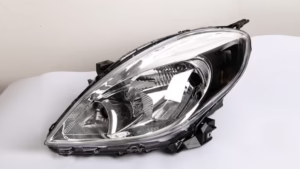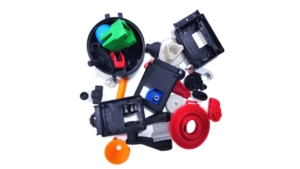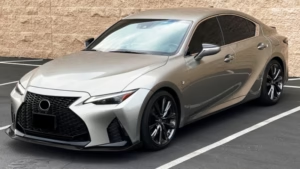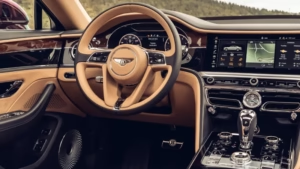Car interior components define not only the visual appeal of a vehicle but also its practicality and safety. This article explores interior car components, the materials, manufacturing processes, and the art of customization.
What Are Car Interiors?
Car interior components encompass all internal elements that contribute to comfort, safety, and aesthetics, creating an environment tailored to the driver and passengers. From the sleek dashboard to the plush seats, every element is meticulously designed to harmonize form and function.
Components of Car Interiors
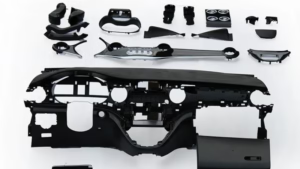
The array of car interior parts names is vast, each serving a distinct purpose. Here’s a closer look at the key elements that define a vehicle’s interior:
Dashboard: The dashboard displays vital information, such as speed, fuel levels, and engine status, through the instrument panel and gauges.
Seats: The seats are designed for comfort and support, often featuring adjustability, heating, ventilation, and lumbar support.
Steering Wheel: The steering wheel serves as the control hub for vehicle direction, often equipped with multifunctional buttons for cruise control, audio, and phone functions.
Gear Shifter: The gear shifter enables drivers to select or shift gears, available in either manual or automatic variants.
Door Panels: The door panels combine aesthetics with utility, incorporating window controls, armrests, and storage compartments. For tailored projects, a custom door trim panel solution ensures both design precision and functionality.
Pedals: The pedals, including the accelerator, brake, and clutch in manual transmissions, are essential for vehicle control.
Center Console: The center console acts as a hub for storage, cup holders, and electronic interfaces, balancing practicality with sleek design.
Interior Lighting: The interior lighting provides ambient light, map lights, and illumination for controls, enhancing usability at night.
Safety Components: The safety components, such as seat belts, airbags, and emergency brakes, are integrated to protect occupants.
Audio Systems and Displays: The audio systems and displays, embedded in the dashboard and center console, provide entertainment and navigation functions.
Headliner and Floor Mats: The headliner, a soft lining on the ceiling, and floor mats, protective coverings on the floor, offer comfort and noise reduction.
Accessories: Accessories, such as sun visors, storage boxes, and ambient lighting, add convenience and flair to the interior.
Common Materials for Car Interiors
The materials used in automotive interior plastic parts and other components are chosen for their durability, aesthetics, and cost-effectiveness. Among the widely used materials are:
Polypropylene (PP): It is one of the most widely used automotive plastics due to its high chemical resistance, flexibility, and lightweight nature. It is widely used for dashboards, door trims, center consoles, and carpeting.
Acrylonitrile Butadiene Styrene (ABS): It is a hard, tough plastic known for its excellent impact resistance and durability. It is favorable for instrument panels, dashboard components, wheel covers, and air vents.
Polycarbonate (PC): It offers high impact resistance, weather resistance, UV rays, temperature extremes, and excellent clarity. PC is typically found in transparent covers for instrument clusters and decorative trim parts where clarity and strength are required.
Polyvinyl Chloride (PVC): It is commonly applied in door panels, dashboard coverings, vinyl upholstery, and cable insulation thanks to its durability and abrasion resistance.
Polyurethane (PU): It is extensively used for seat cushions, armrests, headrests, and soundproofing elements, given its excellent cushioning and insulating properties.
Polystyrene (PS): It is a lightweight, rigid plastic with good dimensional stability. It is used in interior buttons, knobs, sound-dampening foam, and display bases.
Nylon (Polyamide, PA): It finds applications in door handles, gear shift knobs, and engine cover trims for its strength and heat resistance.
Polyethylene (PE): It is often found in seat padding, carpeting backing, and protective wiring layers since it is chemically resistant and lightweight.
Polyoxymethylene (POM): It is applied in interior trim fasteners, door handle components, and fuel system parts for its dimensional stability and durability.
Other materials: The other materials, like leather, wood, and demerging materials, are used in luxurious vehicles.
How to Choose Car Interior Materials?
Materials must withstand UV exposure, temperature fluctuations, and daily wear. Cost considerations often dictate the use of plastics over pricier leather or wood. Aesthetics play a crucial role, aligning with the vehicle’s brand image. Sustainability is increasingly vital, with eco-friendly options like recycled plastics gaining favor. Comfort enhances the driving experience, while safety demands non-toxic, flame-retardant materials.
Common Manufacturing Processes for Car Interiors
Manufacturing automotive interior plastic parts and other components involves:
- Injection Molding: Widely used for automotive interior plastic parts, this process injects molten plastic into molds to create precise components like dashboards and door panels. Leveraging automotive injection molding techniques ensures high precision and consistency.
- Vacuum Forming: Used for complex shapes like headliners, this method shapes heated plastic sheets over molds.
- Foam Molding: This process is used to create cushioned parts, such as seat padding, for comfort and support.
- Leather Processing and Stitching: This process is employed for premium upholstery, ensuring durability and a refined finish.
- Surface Coating and PVD: Physical Vapor Deposition applies decorative finishes, enhancing aesthetics and durability.
- 3D Printing: This process is increasingly used for prototyping and custom car interior parts, offering precision and flexibility.
Custom Car Interior Design and Considerations
Customizing car interior components design process begins with Computer-Aided Design (CAD) modeling, followed by prototyping and compatibility testing to ensure parts fit seamlessly. Key considerations for customization include:
- Compatibility: Parts must align with the vehicle’s specifications, ensuring structural integrity.
- Durability: Materials should endure long-term use without degradation.
- Cost: Balancing bespoke design with budget constraints is critical.
- Regulations: Compliance with safety and emissions standards is non-negotiable.
- Aesthetics: The design must reflect the client’s vision while harmonizing with the vehicle’s overall style.
Zhongren’s Tailored Car Interior Solutions
The realm of car interior components is complex, merging engineering, design, and user comfort. Zhongren offers customized plastic automotive interior solutions combining innovative materials, advanced manufacturing, and expert mold design. Welcome to contact Zhongren and get a tailored plastic auto interior parts solution.
